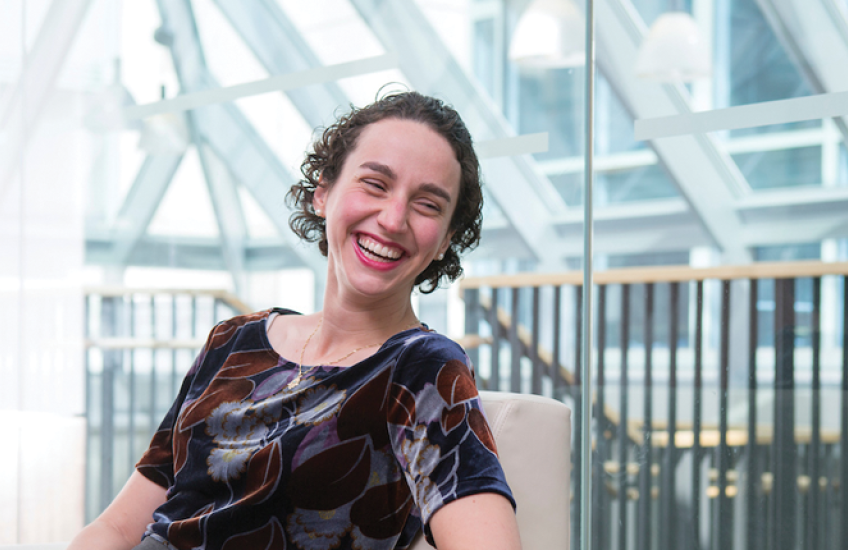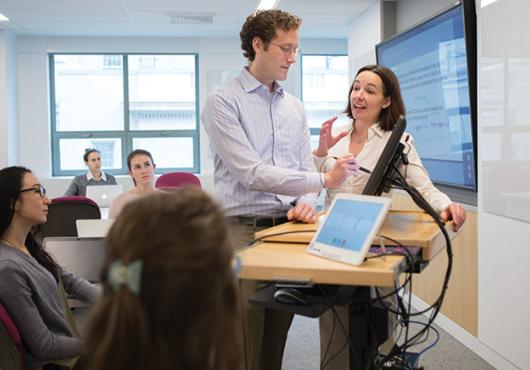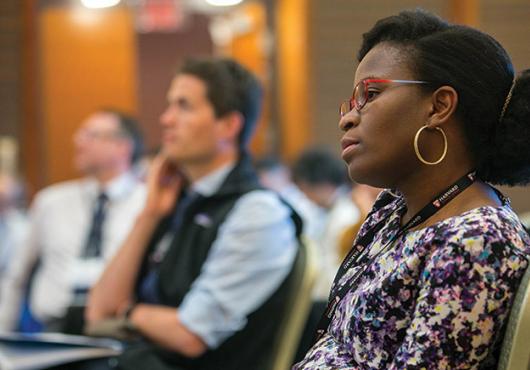This essay was written for the 2018-2019 HMS Dean’s Report in answer to the question “What has been your most formative or memorable experience in your medical education at HMS?”
I found myself wheezing uphill in July on my steel frame bike, cars barreling past my left shoulder a little too close for comfort. Strapped precariously on my back wheels were two packs full of printed circuit boards, silicone molds and batteries, the entirety of my thesis on decompression surgery for Bell’s Palsy.
Most of my time that summer was spent at Massachusetts Eye and Ear, working under the mentorship of Theresa Hadlock and Nathan Jowett, two ENT facial plastic surgeons. That morning, though, I was on my way to Harvard Medical School’s instrumentation lab, working with two incredible researchers who taught me to design circuit boards, guided me in making fine electronic assemblies, and helped troubleshoot coding bugs.
I felt a pang of regret, thinking the results from the tiny microprocessors I had painstakingly soldered probably wouldn’t impact anyone in our hospital beds that day.
From there I would head across the river to the use the polymer mixing equipment at the Harvard Microrobotics Lab, where I had first fallen in love with engineering as an undergraduate working on bug-sized robots and medical devices.
Once a final device was built, I would pedal back to Mass. Eye and Ear to surgically implant the devices in rats, monitoring their whisker movements as the device squeezed the facial nerve until it lost function. The intricate microtechnology had drawn the engineer in me to the project in the first place, and a growing interest in facial surgery was keeping me excited about the research day after day. But, as a rising second-year medical student who had only ever been in the hospital as a spectator, I still felt a disconnect between the hours I spent in the lab and the end results that patients saw in the mirror.
I was used to feeling that disconnect and felt it was just a fact of life if I was going to fuse multiple passions into one career path. On the one hand, I wanted to stay true to my roots as an engineer, which led me toward HMS’s Health Sciences and Technology program as a joint student with MIT.
“Med school for nerds,” I would explain to the confused looks I received when explaining our quantitative, research-focused curriculum.
But I also felt a pull toward serving a broader American and global community, leading me to sign on with the Air Force before matriculating. In between rotations, I found myself marching in formation and guiding teammates through rope courses, learning to both follow and lead alongside some of the most incredible people I have had the privilege to meet.
But I still kept these three worlds—the lab, the military and the hospital—separated in my mind, changing mental gears when I crossed the threshold from one environment to the other.
That summer of lugging my thesis around on two wheels and a prayer came and went. Another summer of officer training school flew past. Two years later I found myself back at Mass. Eye and Ear, this time as one of the constantly-moving members of the ENT service. As I walked past my lab every day on my way up to morning rounds, I felt a pang of regret, thinking the results from the tiny microprocessors I had painstakingly soldered probably wouldn’t impact anyone in our hospital beds that day.
About halfway through the rotation, I was assigned to Dr. Jowett’s operating room for a surgery booked as “corneal reinnervation with greater auricular nerve.” I had never heard of it, and soon realized that was because it was the first of its kind.
The patient, much like Bell’s Palsy patients, lived with half his face paralyzed after a nerve sheath tumor resection. Unfortunately, he had also lost sensation in his eye. Unable to fully close his eye or sense when it was dry or damaged, he was left vulnerable to ulcers on his cornea that slowly robbed him of his vision.
Dr. Jowett and ophthalmologist Roberto Pineda had combined their expertise in different fields—Dr. Jowett in facial nerve grafting and Dr. Pineda in corneal surgery—to design a brand-new surgery for this patient. The OR that morning was packed, everyone anxious to watch this historic procedure take place. As I watched each surgeon coordinate their respective portions of the operation seamlessly, I started to feel the thresholds of my different professional worlds converge.
I realized that morning that years of grant writing or deployments could enhance, rather than distract from, the practice of medicine. The innovative mindset of a researcher, the disciplined yet flexible spirit we were developing as Air Force officers, were all translatable to improving everyday medicine.
What I watched Dr. Jowett and Dr. Pineda do, in seeing connections between their respective fields and acting to turn those observations into an operation, was an example of how to combine these otherwise-separated aspects of my life and focus them into creating a sum larger than its parts.






